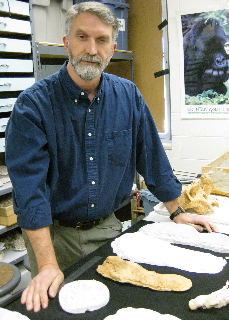
October 13, 2011

Today, Dr. Jeffrey Meldrum, Associate Professor of Anatomy and Anthropology and Adjunct Associate Professor of the Department of Anthropology at Idaho State University, is on a flight back from Russia, after attending events arranged in Moscow and Siberia by Russian hominologists. Before he left, he passed along to me his insights regarding some news items reported here previously. (Other related postings about the international media and the conference are here and here.)
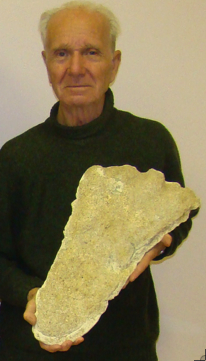
Vadim Makarov (International Cryptozoology Museum collection)
Meldrum writes:
“The conference aspect of this enterprise has been a reasonably productive effort overall — illuminating at the very least. The ‘expedition’ which was supposed to be nothing more than a field trip to visit some sites and get a feel for the surroundings, turned out to be something quite different in the minds of the organizers, placing the invitees in a rather awkward and uncomfortable position. But yesterday, I spent the day with Dmitri Pirkulov and Vadim Makarov, one of the new generation of credible researchers and one of the old guard. I was permitted to examine and make molds of several footprint casts. For me this was one of the highlights of the experience here!”
Here is yet another version of what happened on that “field trip” to the cave.
Meldrum sends this along for October 13th: “A point of clarification. The Cave site is near Tishtagol in the Kemerov District. This is not eastern Siberia, but rather south central Siberia, near the western border of Mongolia. It is in fact quite near the site of the recently described Homo denisiova. The DNA analysis of this species places it outside H. sapiens and H. neandertalensis, or as the sister group to the latter. However, an associated molar is quite large, on par with australopithecine dentitions, which is quite interesting. Although the evidence encontered in the cave on this field trip was not reliable, in my opinion, I hope the attention brought to the cave will promote archeological exploration there soon, possibly shedding more light on the Denisova hominid and any relation it may have to reports of relict hominoids in the region.”
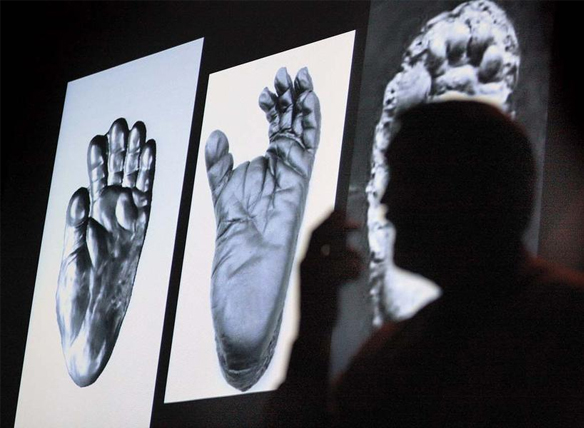
Dr. Jeffrey Meldrum Lecturing
Additionally, with reference to this posting, “Exaggerated Snowmen Claims Not Good For Cryptozoology,” skeptic Benjamin Radford sent in the following comments publicly to Facebook (which were then imported to Cryptomundo), going beyond my point and taking to task cryptozoology overall:
“‘Exaggerated claims’ and hoaxes tend to make up the bulk of what passes for cryptozoology…I have three shelf-fulls of books on cryptozoology FILLED with exaggeration.”

In response to my call for some critical thinking regarding Radford’s own exaggerations against cryptozoology, Ben Radford replied:
“I’d agree with you that there are many cryptozoologists who do not make exaggerated claims, but if you’re talking about the bulk of crypto literature, I’d say exaggeration (often of evidence) is more common than not.”
Specifically, addressing these comments, Jeff Meldrum gave me permission to share his rebuttal:
“Tell Benjamin that unless he has at least looked into the facts of a new event, he should hold his peace, to put it politely. As I have criticized him before — he needs to learn to discriminate between the academics who are trying to go about this rationally and the amateur enthusiasts collectively, which encompasses a wide spectrum of reliability. The comment referring to his bookshelf is like relying on creationist literature for information on evolution!”
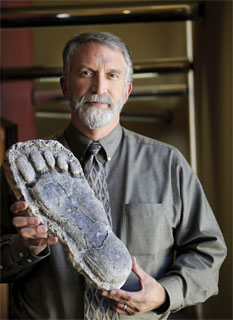
To which, Ben Radford replied publicly, again on FB:
“Huh? What is Jeff complaining about? All I said was that cryptozoology is rife with exaggerated claims. I wasn’t referring to Jeff at all… in fact the only researcher I mentioned by name was Grover, and I gave an example of one of his exaggerated claims.”
The specific object of all this discussion at the conference is, of course, the population of Siberian Snowmen in eastern Russia:
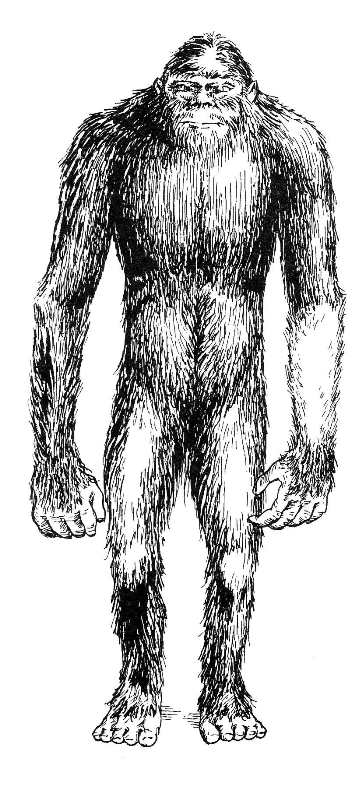
This Siberian Snowman (illustrated above), which was individually named Mecheny by the eyewitnesses, is the Harry Trumbore drawing from Loren Coleman’s and Patrick Huyghe’s The Field Guide to Bigfoot and Other Mystery Primates.
About Loren Coleman
Loren Coleman is one of the world’s leading cryptozoologists, some say “the” leading living cryptozoologist. Certainly, he is acknowledged as the current living American researcher and writer who has most popularized cryptozoology in the late 20th and early 21st centuries.
Starting his fieldwork and investigations in 1960, after traveling and trekking extensively in pursuit of cryptozoological mysteries, Coleman began writing to share his experiences in 1969. An honorary member of Ivan T. Sanderson’s Society for the Investigation of the Unexplained in the 1970s, Coleman has been bestowed with similar honorary memberships of the North Idaho College Cryptozoology Club in 1983, and in subsequent years, that of the British Columbia Scientific Cryptozoology Club, CryptoSafari International, and other international organizations. He was also a Life Member and Benefactor of the International Society of Cryptozoology (now-defunct).
Loren Coleman’s daily blog, as a member of the Cryptomundo Team, served as an ongoing avenue of communication for the ever-growing body of cryptozoo news from 2005 through 2013. He returned as an infrequent contributor beginning Halloween week of 2015.
Coleman is the founder in 2003, and current director of the International Cryptozoology Museum in Portland, Maine.
Filed under Abominable Snowman, Almas, Breaking News, Cryptomundo Exclusive, Cryptotourism, CryptoZoo News